Your cart is currently empty!
Month: July 2024
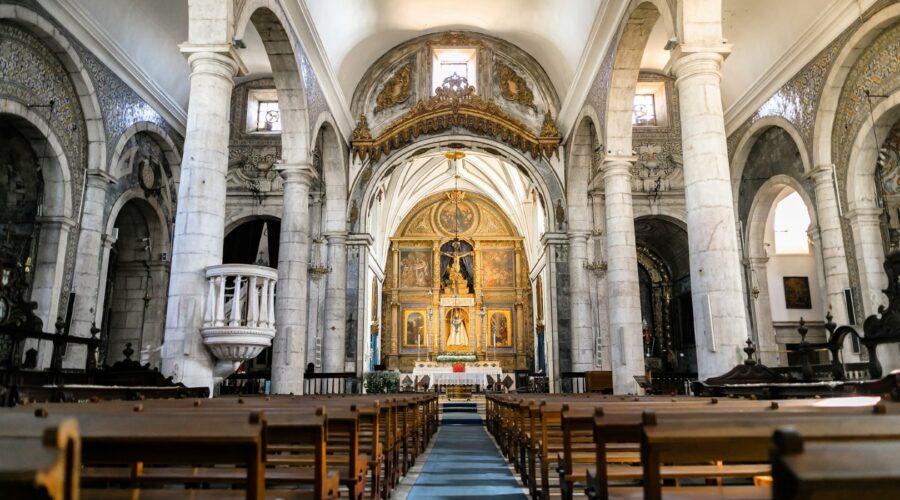
Dawnchere Wilkerson: A Biographical Exposition
Early Life and Education
Dawnchere Wilkerson, an American poet, editor, and professor, was born in 1968 in Columbia, South Carolina. Her passion for writing emerged at an early age, and she pursued her literary aspirations throughout her academic journey. Wilkerson earned a Bachelor of Arts degree in English from Spelman College in 1991 and later obtained a Master of Fine Arts in Creative Writing from the University of Alabama in 1993.
Literary Career and Poetic Accomplishments
Poetic Style and Themes
Dawnchere Wilkerson’s poetic style is characterized by its lyrical grace, emotional depth, and keen observations of the human experience. Her poems often explore themes of race, gender, identity, and the complexities of human relationships. Wilkerson’s work is known for its evocative imagery, rich sensory details, and a nuanced exploration of the personal and the political.
Notable Works
- “Blackberries and Salt”: Wilkerson’s debut poetry collection, published in 2002, garnered critical acclaim and established her as a rising star in contemporary poetry.
- “The Bad Girl’s Guide to Good Living”: This collection, published in 2013, further cemented Wilkerson’s reputation as a gifted poet known for her honesty, vulnerability, and exploration of complex female experiences.
- “The Great Black Family Circus”: Wilkerson’s latest collection, released in 2022, continues her exploration of the multifaceted nature of Black identity, family, and community.
Awards and Recognition
Dawnchere Wilkerson’s poetic talent has been widely recognized through numerous awards and honors. She has received prestigious fellowships from the National Endowment for the Arts, the Cave Canem Foundation, and the Guggenheim Foundation. Her work has been featured in esteemed literary journals and anthologies, earning accolades for its depth, originality, and impact.
Editorial and Teaching Contributions
Ambitious Editorial Endeavors
In addition to her writing endeavors, Dawnchere Wilkerson has also made significant contributions as an editor. She was the founding editor of “cave canem,” a prominent literary journal dedicated to publishing the work of Black poets. Wilkerson’s editorial vision and dedication to nurturing emerging voices have played a vital role in shaping contemporary African American poetry.
Nurturing Young Writers
Wilkerson has dedicated herself to teaching and mentoring young writers. She is an esteemed professor in the Creative Writing Program at the University of Georgia. Her passion for cultivating literary talent has inspired numerous students, guiding them on their own creative journeys.
Legacy and Influence
Dawnchere Wilkerson’s work has left an indelible mark on the literary landscape. Her powerful and evocative poetry, unwavering commitment to diversity and inclusion, and dedication to nurturing emerging voices have made her a beacon in the world of literature. Wilkerson’s legacy will continue to inspire and empower generations of writers and readers alike.
Resources and Further Reading

David Yonggi Cho: A Lighthouse of Faith and Charisma
Early Life and Spiritual Awakening
David Yonggi Cho (1936-2021) was born in Ulsan, South Korea. His childhood was marked by poverty and the Korean War. At the age of 17, he had a profound spiritual experience that led him to convert to Christianity.
Cho’s initial church was a small gathering in a tent. However, through his unwavering belief and charismatic preaching, his congregation grew exponentially. In the early 1960s, he founded the Yoido Full Gospel Church in Seoul, which became the largest Pentecostal church in the world.
Theological Beliefs and Practices
Cho’s theological views were rooted in the Pentecostal tradition, emphasizing the baptism of the Holy Spirit, divine healing, and the power of prayer. He believed in the importance of faith-based prosperity and saw the church as a vehicle for social transformation.
One of Cho’s key teachings was the “four spiritual laws of love.” He believed that these laws were essential for a fulfilling Christian life:
- God loves you and wants a personal relationship with you.
- Sin separates you from God.
- Jesus Christ died on the cross to pay for your sins.
- You can receive forgiveness and eternal life by believing in Jesus Christ.
Church Growth and Expansion
Under Cho’s leadership, Yoido Full Gospel Church experienced phenomenal growth. By the 1970s, it had become a mega-church with millions of members. Cho attributed this growth to prayer, evangelism, and a strong emphasis on discipleship.
Cho played a significant role in spreading Pentecostalism and Christianity throughout South Korea and beyond. He established churches and trained thousands of pastors worldwide.
Controversies and Criticism
Despite his widespread influence, Cho’s ministry was not without controversy. Critics accused him of financial improprieties and of using his platform to promote his personal agendas.
In the 1990s, Cho was imprisoned for embezzling church funds. He later claimed to have been falsely accused and that the charges were politically motivated.
Legacy and Impact
Despite the controversies, David Yonggi Cho’s legacy remains significant. He is remembered as a tireless advocate for faith-based healing, prosperity, and spiritual growth.
Cho’s teachings and the work of the Yoido Full Gospel Church continue to inspire Christians around the world. His focus on practical Christianity and his belief in the power of prayer have left an enduring mark on the Pentecostal movement.
Key Takeaways
- David Yonggi Cho was a charismatic leader who led the growth of the Pentecostal movement in South Korea and beyond.
- He emphasized the importance of faith-based prosperity and the power of prayer.
- The “four spiritual laws of love” were a cornerstone of his teachings.
- Yoido Full Gospel Church, founded by Cho, became the largest Pentecostal church in the world.
- Despite controversies, Cho’s legacy remains significant as an advocate for faith-based healing and spiritual growth.

**Columbia University Medical Center (CUMC): A Comprehensive Guide**
Introduction
Columbia University Medical Center (CUMC) is one of the world’s leading academic medical centers, renowned for its exceptional patient care, groundbreaking research, and transformative education.
History and Mission
History
CUMC traces its roots back to 1767 with the founding of the College of Physicians and Surgeons (P&S). In 1891, P&S merged with Columbia University, solidifying their partnership in medical education and research.
Mission
CUMC’s mission is to advance human health through excellence in patient care, research, and education. They strive to provide the highest quality care, translate research into life-saving treatments, and train future healthcare leaders.
Patient Care
Hospitals and Facilities
- NewYork-Presbyterian Hospital/Columbia University Irving Medical Center
- Morgan Stanley Children’s Hospital of NewYork-Presbyterian
- NewYork-Presbyterian Queens
- NewYork-Presbyterian Hudson Valley Hospital
- NewYork-Presbyterian Lawrence Hospital
Medical Specialties
CUMC offers a comprehensive range of medical specialties, including:
- Cardiology
- Neurology
- Oncology
- Orthopedics
- Pediatrics
Clinical Trials and Innovations
CUMC is actively involved in clinical trials and research studies to develop innovative treatments and improve patient outcomes. Their researchers have made significant contributions to advancements in:
- Cancer immunotherapy
- Precision medicine
- Neuroscience
- Cardiovascular disease
Research
Research Centers and Institutes
- Herbert Irving Comprehensive Cancer Center
- Center for Neurocritical Care and Hyperbaric Medicine
- Center for Gene Therapy
- Center for Molecular Imaging
- Institute for Human Nutrition
Research Funding
CUMC receives significant research funding from the National Institutes of Health (NIH) and other organizations, supporting their groundbreaking research programs.
Research Collaborations
CUMC collaborates with institutions worldwide on various research projects, fostering innovation and accelerating scientific discoveries.
Education
Colleges and Schools
- Columbia University Vagelos College of Physicians and Surgeons (P&S)
- Columbia University School of Nursing
- Columbia University Mailman School of Public Health
Medical and Health Professions Programs
CUMC offers a wide range of medical and health professions programs, including:
- Doctor of Medicine (MD)
- Doctor of Nursing Practice (DNP)
- Master of Science in Nursing (MSN)
- Master of Public Health (MPH)
- Master of Science in Physical Therapy (MSPT)
Continuing Medical Education
CUMC provides continuing medical education (CME) opportunities for healthcare professionals to stay up-to-date on the latest advances in medicine.
Community Engagement
CUMC actively engages with the community through:
- Health outreach programs
- Community health centers
- Educational initiatives
- Partnerships with local organizations
Awards and Recognition
CUMC has received numerous awards and accolades for its excellence in patient care, research, and education, including:
- U.S. News & World Report: Consistently ranked among the top hospitals in the nation
- National Cancer Institute: Designated as a Comprehensive Cancer Center
- National Institutes of Health: Major research funding recipient
Conclusion
Columbia University Medical Center (CUMC) is a globally renowned academic medical center dedicated to providing exceptional patient care, conducting groundbreaking research, and training future healthcare leaders. With its comprehensive services, innovative research programs, and commitment to community engagement, CUMC continues to advance human health and improve lives.
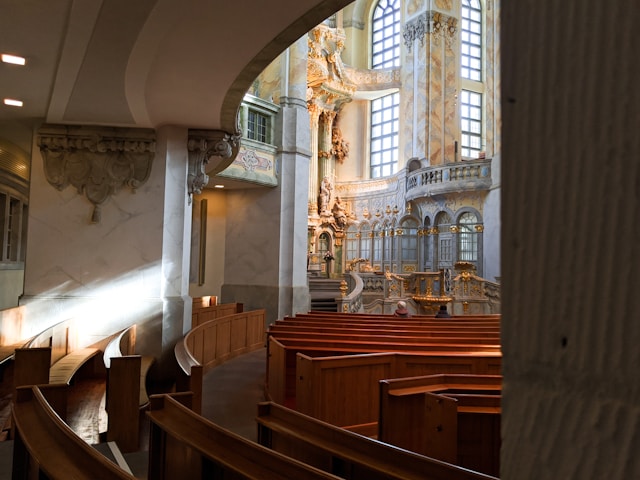
CSI Church: A Comprehensive Insight into Its History, Beliefs, and Practices
Introduction
The Church of South India (CSI) is a united Protestant Church in India, formed in 1947 through the union of four major Protestant denominations in South India: the Anglican Church of South India, the Methodist Church in Southern Asia, the Congregational Church in South India, and the Presbyterian Church of South India.
The CSI is the largest Protestant denomination in India, with over 4 million members in 25 dioceses spread across 14 states in South India. The Church is a member of the World Council of Churches, the Christian Conference of Asia, and the National Council of Churches in India.
History of CSI Church
The roots of the CSI Church can be traced back to the work of Christian missionaries in South India during the 18th and 19th centuries. The first Anglican missionaries arrived in India in 1706, followed by Methodist missionaries in 1817 and Congregational missionaries in 1836. Presbyterian missionaries began working in South India in 1841.
These missionary efforts led to the establishment of several Protestant denominations in South India. The Anglican Church of South India was formed in 1896, the Methodist Church in Southern Asia in 1905, the Congregational Church in South India in 1914, and the Presbyterian Church of South India in 1924.
In the early 20th century, there was a growing movement towards unity among the Protestant churches in South India. In 1947, the four major Protestant denominations in South India merged to form the Church of South India.
Beliefs of CSI Church
The CSI Church is a Trinitarian church that affirms the Nicene Creed as its statement of faith. The Church believes in the Bible as the inspired word of God and in the sacraments of baptism and Holy Communion.
The CSI Church is also a member of the World Methodist Council, which affirms the following core beliefs:
- The unity of God as Father, Son, and Holy Spirit
- The full deity and full humanity of Jesus Christ
- The saving power of the Holy Spirit
- The authority of the Bible as the word of God
- The importance of Christian mission
Practices of CSI Church
The CSI Church is a liturgical church that follows the Book of Common Prayer. The Church’s worship services are characterized by their use of music, hymns, and Scripture readings.
The CSI Church also has a strong emphasis on social justice. The Church works to promote education, healthcare, and economic development in the communities it serves.
Structure of CSI Church
The CSI Church is governed by a synod, which is composed of bishops, clergy, and laity. The synod meets annually to elect the Church’s bishops and to set policy.
The CSI Church is divided into 25 dioceses, each of which is led by a bishop. The dioceses are further divided into districts, which are led by district superintendents.
Challenges Facing CSI Church
The CSI Church faces a number of challenges, including:
- The rise of Pentecostalism and evangelicalism in India
- The continuing influence of caste and other social divisions within the Church
- The need to address the social and economic needs of its members
Future of CSI Church
Despite the challenges it faces, the CSI Church remains a vibrant and growing church. The Church is committed to its mission of proclaiming the gospel of Jesus Christ and serving the people of South India.
The future of the CSI Church is bright. The Church is well-positioned to continue to grow and to make a significant impact on the lives of its members and the communities it serves.
Conclusion
The CSI Church is a vibrant and growing church with a rich history and a bright future. The Church is committed to its mission of proclaiming the gospel of Jesus Christ and serving the people of South India.
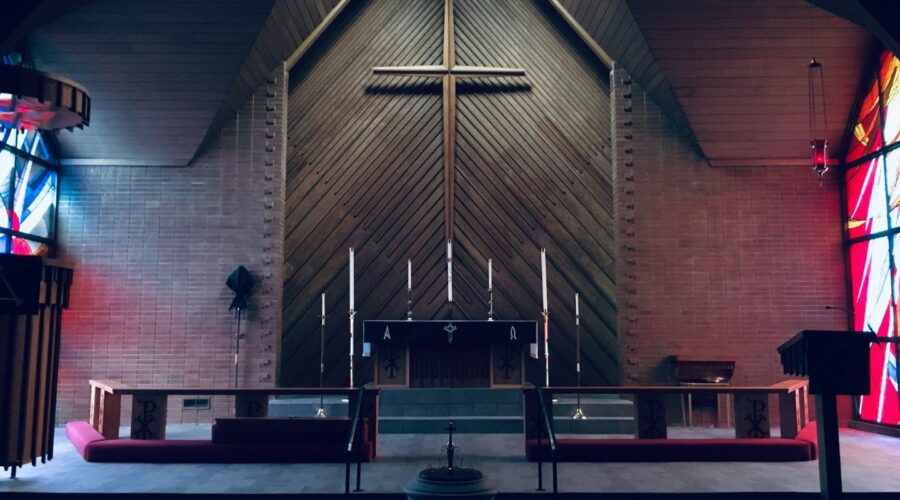
Unlocking the Crown of Life: A Guide to Its Meaning and Eternal Rewards
Introduction
The crown of life is a powerful symbol of victory, righteousness, and the eternal rewards promised to those who faithfully follow Christ. This celestial diadem is mentioned throughout Scripture, offering a glimpse of the glorious destiny that awaits believers. In this comprehensive guide, we delve into the intricate meaning of the crown of life, exploring its biblical significance, different types, and the path to claiming it.
Biblical Significance of the Crown of Life
The crown of life is rooted in the Old Testament, where God promised a crown to His righteous servants (Proverbs 12:4). In the New Testament, the apostle James reiterates this promise, stating that the crown is given to those who “endure temptation” (James 1:12). The book of Revelation expands on this imagery, describing a multitude of saints wearing golden crowns and worshipping before the throne of God (Revelation 4:4).
Types of Crowns of Life
- The Imperishable Crown: This crown is awarded to those who remain faithful to the end, persevering through trials and temptations (1 Corinthians 9:25).
- The Crown of Righteousness: This crown is given to those who live righteously, reflecting the character of Christ (2 Timothy 4:8).
- The Crown of Life: This crown is the ultimate reward for those who overcome the temptations of the world and remain faithful to God (Revelation 2:10).
The Path to Claiming the Crown of Life
Receiving the crown of life is not a passive act but requires active faith and obedience. Here are some key steps to consider:
1. Repent of Sin and Believe in Christ
The first step to claiming the crown of life is to repent of sin and place your faith in Jesus Christ as your Savior. Through His sacrificial death and resurrection, He paid the price for our sins and offers us eternal life (John 3:16).
2. Endure Trials and Temptations
Following Christ will inevitably involve trials and temptations. However, we are encouraged to “endure temptation” and remain steadfast in our faith (James 1:12). When we endure these challenges, we are building a foundation for receiving the imperishable crown.
3. Live a Righteous Life
The crown of righteousness is awarded to those who live in accordance with God’s commands. This includes living a life of integrity, love, and obedience. By striving to reflect the character of Christ, we prepare ourselves for this eternal reward.
Additional Considerations
In addition to these key steps, here are some additional considerations:
1. Seek the Glory of God
Our pursuit of the crown of life should not be motivated by personal ambition but rather by a desire to glorify God. When we live for His glory, He will reward us accordingly.
2. Persevere Until the End
The crown of life is given to those who remain faithful “until the end” (Matthew 10:22). Perseverance is essential, even in the face of adversity and temptation.
3. Be Encouraged by God’s Promises
The Scriptures contain numerous promises of eternal rewards for those who remain faithful. These promises can encourage us to persevere in our journey and strive for the crown of life.
Conclusion
The crown of life is a glorious symbol of the eternal rewards that await believers. By repenting of sin, enduring temptations, and living a righteous life, we can claim this precious diadem. As we journey towards this celestial destination, let us seek the glory of God, persevere until the end, and be encouraged by His unwavering promises. May we all strive to live a life worthy of receiving the crown of life and reign with Christ for eternity.

Crave Church Reddit: A Comprehensive Guide
Introduction
Crave Church is a contemporary, non-denominational Christian church based in Wilmington, North Carolina. The church is known for its innovative approach to worship, its focus on community, and its outreach programs. Crave Church has a strong presence on Reddit, where its members and supporters engage in discussions, share stories, and provide support to each other.
Reddit Subreddit
The Crave Church Reddit subreddit, r/cravechurch, is an active community with over 1,000 members. The subreddit serves as a platform for discussion, fellowship, and prayer. Members share posts about their experiences with Crave Church, ask questions about the church’s teachings, and pray for one another.
Subreddit Rules
To maintain a positive and welcoming environment, the subreddit has established a set of rules that members are expected to follow:
- Be respectful of others, even if you disagree with their views.
- No profanity, vulgarity, or hate speech.
- No spam or self-promotion.
- Stay on topic and avoid trolling.
Community Events
Crave Church organizes regular events both in person and online to foster fellowship and spiritual growth within its community. Some of the most popular events include:
In-Person Events
- Sunday Services: Held at the church’s Wilmington campus, services feature worship, teaching, and community gatherings.
- Growth Groups: Small group gatherings focused on Bible study, prayer, and personal growth.
- Community Nights: Social events that bring the community together for food, games, and fellowship.
Online Events
- Livestream Services: Sunday services are streamed live on the church’s website and social media platforms for those unable to attend in person.
- Online Bible Studies: Weekly Zoom sessions for in-depth discussions on various topics.
- Virtual Prayer Room: A dedicated online space for members to connect, pray, and offer support.
Outreach Programs
In addition to its regular services and community events, Crave Church is actively involved in outreach programs aimed at serving the local community and beyond. These programs include:
Local Outreach
- Food Pantry: Providing food assistance to those in need.
- Community Gardens: Growing fresh produce that is donated to local organizations.
- Homeless Outreach: Distributing food, clothing, and hygiene kits to homeless individuals.
Global Outreach
- Mission Trips: Short-term mission trips to various countries, providing support and assistance to communities in need.
- Partnering with Local Churches: Collaborating with other churches to provide aid and support to underprivileged communities.
- Disaster Relief: Responding to natural disasters and providing assistance to affected areas.
Media and Resources
Crave Church offers various media and resources to its members and the broader community:
Podcast
The Crave Church Podcast features sermons, interviews, and discussions on faith, spirituality, and current events. Episodes are available on major podcasting platforms such as Spotify, Apple Podcasts, and Google Podcasts.
Blog
The Crave Church Blog publishes articles on a wide range of topics related to faith, personal growth, and community engagement. Posts are written by pastors, staff, and guest contributors.
Bible App
Crave Church has developed its own Bible app, which includes daily devotionals, study plans, and access to multiple Bible versions. The app is available for free on the App Store and Google Play.
Conclusion
Crave Church Reddit is a vibrant online community that reflects the values and mission of the church. Through its subreddit, events, outreach programs, and media resources, Crave Church provides a welcoming and supportive environment for spiritual growth, community building, and service to others.
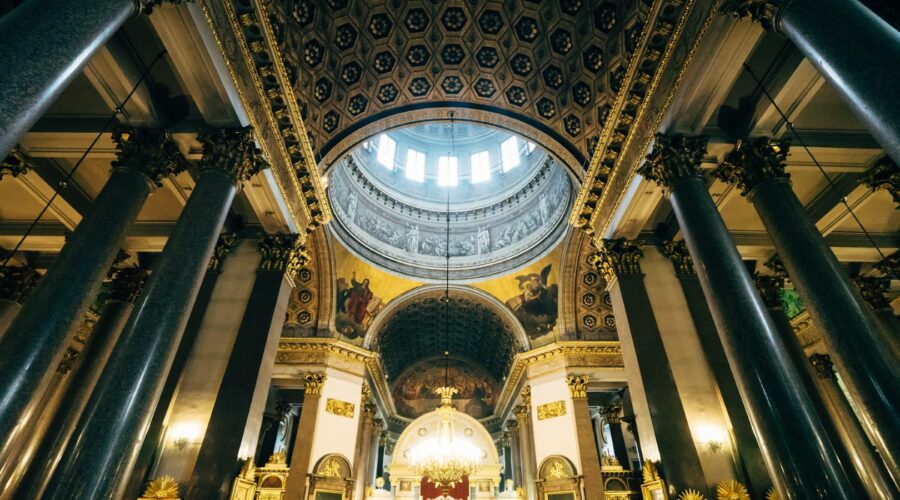
Cornerstone Connections: Building the Foundation of Your Website
Introduction
Cornerstone content is the foundation of your website. It’s the content that you want to rank for in search engines, and it’s the content that will help you attract and convert visitors. Creating high-quality cornerstone content is essential for any website that wants to succeed online.
What is Cornerstone Content?
Cornerstone content is long-form, in-depth, and authoritative content that covers a specific topic in detail. It’s the kind of content that you would expect to find on a Wikipedia page or a university website. Cornerstone content is typically written by experts in the field, and it’s often cited by other websites as a source of information.
Why is Cornerstone Content Important?
There are a number of reasons why cornerstone content is important for your website:
- It helps you rank in search engines. Cornerstone content is long and in-depth, which gives it a better chance of ranking for competitive keywords. It’s also usually cited by other websites, which gives it a boost in search engine rankings.
- It attracts and converts visitors. Cornerstone content is informative and engaging, which makes it more likely to attract visitors to your website. It’s also more likely to convert visitors into customers, because it provides them with the information they need to make a decision.
- It builds trust and credibility. Cornerstone content is written by experts in the field, which gives it a high level of credibility. This can help you build trust with your visitors and make them more likely to do business with you.
How to Create Cornerstone Content
Creating cornerstone content is a time-consuming process, but it’s worth the effort. Here are a few tips for creating high-quality cornerstone content:
- Choose a topic that you’re passionate about and knowledgeable about. This will make the writing process more enjoyable, and it will also help you create content that is informative and engaging.
- Do your research. Before you start writing, take the time to research your topic thoroughly. This will help you understand the topic inside and out, and it will also help you identify the key points that you want to cover in your content.
- Write for your audience. Keep your audience in mind as you write. What are their needs and interests? What kind of information are they looking for? Write your content in a way that is easy to understand and engaging for your audience.
- Promote your cornerstone content. Once you’ve created a piece of cornerstone content, don’t forget to promote it! Share it on social media, submit it to directories, and link to it from other pages on your website.
Conclusion
Cornerstone content is the foundation of your website. It’s the content that you want to rank for in search engines, and it’s the content that will help you attract and convert visitors. Creating high-quality cornerstone content is essential for any website that wants to succeed online.
Additional Tips for Creating Cornerstone Content
Here are a few additional tips for creating cornerstone content:
- Make sure your content is well-written and error-free. Typos and grammatical errors can make your content look unprofessional and untrustworthy.
- Use images, videos, and other visuals to make your content more engaging. Visuals can help break up your text and make it more visually appealing.
- Promote your cornerstone content through social media, email marketing, and other channels. The more people who see your content, the more likely you are to attract visitors to your website.
- Keep your cornerstone content up-to-date. As your industry changes, so should your cornerstone content. Make sure to update your content regularly to ensure that it’s always accurate and relevant.
Examples of Cornerstone Content
Here are a few examples of cornerstone content:
Website Cornerstone Content HubSpot Inbound Marketing Blog Neil Patel Digital Marketing Blog Search Engine Journal Blog 
Congregational: A Comprehensive Guide
Congregationalism, a form of church government, emphasizes the authority of the local congregation in matters of faith and practice. This blog post provides an in-depth exploration of the concept of congregationalism, its history, principles, and how it is practiced today.
Historical Origins:
Congregationalism emerged during the Reformation, influenced by the teachings of John Calvin and other reformers. It gained prominence in England during the 16th century, when Puritans challenged the authority of the Anglican Church and sought greater autonomy for local congregations.
Core Principles:
Congregational churches are characterized by several core principles:
- Authority of the Congregation:
The local congregation is the highest authority in matters of faith, doctrine, and practice. It exercises this authority through its members, who elect leaders and make decisions through a democratic process.
- Autonomy:
Congregations are independent and self-governing. They are not subject to the authority of external bodies such as regional synods or national denominations.
- Covenant Membership:
Members join a congregation through a covenant, a formal agreement that outlines their commitments to the church and to one another.
Governance:
Congregational churches are typically governed by a group of elected lay leaders known as deacons, elders, or trustees. These leaders serve for limited terms and are responsible for the spiritual oversight, financial management, and administrative affairs of the congregation.
Worship and Sacraments:
Congregational churches typically follow a simple and participatory style of worship. Worship services include singing, prayer, preaching, and the celebration of sacraments such as baptism and the Lord’s Supper.
Outreach and Mission:
Congregational churches are often actively involved in outreach and mission activities. They may support local charities, engage in social justice initiatives, and participate in global mission efforts.
Types of Congregational Churches:
There are various types of congregational churches, including:
- United Church of Christ:
Formed in 1957, the United Church of Christ is a large congregational denomination in the United States with a strong commitment to social justice and inclusivity.
- American Baptist Churches USA:
A national fellowship of congregational Baptist churches that emphasizes the importance of individual conscience and freedom of religion.
- Congregational Federation:
An association of independent congregational churches that provides support and resources for its members.
Benefits of Congregationalism:
Congregationalism offers several advantages, including:
- Local Autonomy:
Congregations have autonomy to determine their own beliefs, practices, and ministry approaches.
- Lay Involvement:
Lay members play a significant role in the governance and decision-making of the congregation.
- Flexibility:
Congregations can adapt to changing circumstances and meet the unique needs of their communities.
Challenges of Congregationalism:
Congregationalism also has some challenges to navigate:
- Potential for Division:
The autonomy of congregations can lead to divisions and conflicts over matters of faith and practice.
- Lack of Accountability:
Independent congregations may face a lack of accountability to external bodies, which can result in doctrinal or ethical issues.
- Financial Constraints:
Congregations are responsible for their own financial support, which can be a challenge for smaller or less affluent communities.
Conclusion:
Congregationalism, with its emphasis on the authority of the local congregation, has been a significant force in the history of Christianity. Its principles of autonomy, covenant membership, and lay involvement continue to guide congregational churches today. While it offers several benefits, the challenges of congregationalism must also be recognized and addressed. Through effective governance, collaboration, and a commitment to unity, congregational churches can thrive and continue to make valuable contributions to their communities and the wider world.
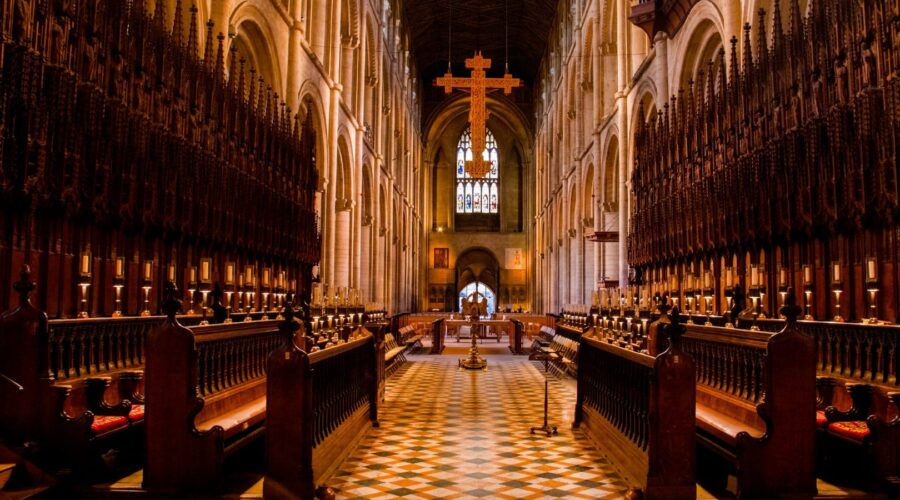
Clement of Rome: The First Bishop of Rome and a Pioneer of Christian Theology
Introduction
Clement of Rome, a prominent figure in the early Church, played a pivotal role in shaping the development of Christian theology and ecclesiastical governance. As the fourth Bishop of Rome, he was instrumental in establishing the Church’s apostolic succession and developing its liturgy and canon law.
Early Life and Conversion
Greek Origins
Clement was likely born in Rome around 30 AD to a wealthy pagan family of Greek origin. His parents, who were both enslaved, came from the Greek city of Philippi.
Conversion to Christianity
Around 65 AD, Clement converted to Christianity, possibly under the influence of Saint Peter or Saint Paul. His conversion marked a profound turning point in his life, leading him to devote himself wholeheartedly to the new faith.
Ministry in Rome
Ordination and Episcopacy
In the latter part of the 1st century, Clement was ordained as a presbyter in the Church of Rome. Following the deaths of Linus and Anacletus, the two previous bishops, Clement was elected as the fourth Bishop of Rome around 92 AD.
Leadership and Reforms
As bishop, Clement implemented significant reforms within the Roman Church, including the establishment of a standardized liturgy and a hierarchical structure. He also played a crucial role in resolving conflicts within the Christian community and maintaining peace and unity.
Corinthian Correspondence
The First Clement
In the wake of a schism within the Corinthian Church, Clement penned a letter, known as the “First Clement,” around 96 AD. This epistle is considered one of the most important early Christian writings.
Purpose and Themes
In his letter, Clement exhorted the Corinthians to restore order and harmony within their community. He emphasized the virtues of humility, love, and submission to authority.
Theological Contributions
Apostolic Succession
Clement was a fervent advocate of apostolic succession, believing that the bishops of the Church were direct successors to the Apostles.
Eucharistic Theology
Clement developed a rich understanding of the Eucharist, emphasizing its significance as a sacrament of communion with Christ and the Church.
Martyrdom and Holiness
Clement stressed the importance of martyrdom as a witness to the faith. He believed that those who died for the sake of Christ were worthy of veneration and imitation.
Legacy and Impact
Pioneer of Church Organization
Clement’s contributions were pivotal in shaping the future of the Church. His establishment of a hierarchical structure and standardized liturgy laid the foundation for the development of a global Christian institution.
Theological Thought
Clement’s theological writings provided a robust framework for Christian faith and practice. His teachings on apostolic succession, the Eucharist, and martyrdom have left an enduring legacy.
Patron Saint
Saint Clement is venerated as a patron saint of sailors and mariners. His association with the sea stems from a legend that his body was cast into the sea and miraculously recovered.
Conclusion
Clement of Rome was a towering figure in the early Church, whose contributions to the development of Christian theology and governance were profound. His leadership, theological insights, and unwavering commitment to the faith left an everlasting mark on the Church’s history and traditions.
Additional Resources
- Vatican Website on Clement of Rome
- Encyclopedia Britannica Article on Clement of Rome
- Christian Classics Ethereal Library: The First Clement
Timeline of Clement’s Life 30 AD Birth in Rome 65 AD Conversion to Christianity 92 AD Election as Bishop of Rome 96 AD Writing of the First Clement 100 AD Martyrdom (according to tradition) 
Unveiling the Legacy of Clement of Alexandria: A Luminary in Early Christian Thought
Prologue: The Enigmatic Figure of Clement
Clement of Alexandria stands as an enigmatic and influential figure in the annals of Christian thought. Living in the 2nd and early 3rd centuries, Clement left an enduring mark on Christian theology, philosophy, and education. This comprehensive guide will delve into the life, teachings, and legacy of Clement, shedding light on his pivotal role in the development of Christianity.
Chapter 1: Biography and Historical Context
Clement’s life is shrouded in some uncertainty, with limited biographical information available. He likely hailed from Greece and received a well-rounded education in classical Greek philosophy. Clement traveled widely throughout the Roman Empire before settling in Alexandria, Egypt, where he became a teacher and head of the famed Catechetical School.
H3: The Catechetical School of Alexandria
Established in the 2nd century, the Catechetical School of Alexandria served as a renowned center of Christian learning. Clement’s leadership transformed the school into a vibrant hub where students from diverse backgrounds sought instruction in theology, philosophy, and the arts. The school became a catalyst for the development of Christian intellectualism and apologetics.
Chapter 2: Clement’s Theological Contributions
H3: The Logos Doctrine
Clement is renowned for his articulation of the Logos doctrine. He identified the Logos, the divine reason or word, as the intermediary between God and humanity. The Logos acted as the creator of the world, the guide for humanity, and the means of salvation. Clement’s Logos doctrine influenced later Christian theologians, including Origen and Augustine.
H3: Christian Apologetics
Clement was an ardent defender of Christianity against pagan critics. He wrote several treatises, notably “Exhortation to the Greeks” and “Protrepticus,” which aimed to demonstrate the superiority of Christian teachings over pagan beliefs. Clement argued that Christianity offered a rational and moral system that fulfilled the search for truth and salvation.
Chapter 3: Philosophy and Gnosticism
H3: Clement’s Adoption of Greek Philosophy
Clement’s theological system was deeply influenced by Greek philosophy, particularly the teachings of Plato and Aristotle. He saw Greek philosophy as a valuable tool for understanding and articulating Christian truths. Clement believed that philosophy provided a common language and conceptual framework for engaging with non-Christian intellectuals.
H3: Clement’s Engagement with Gnosticism
Gnosticism, a religious and philosophical movement prevalent in the early centuries of Christianity, posed a significant challenge to Christian orthodoxy. Clement emerged as a leading critic of Gnosticism. He argued against Gnostic dualism, which separated the spiritual from the material world, and emphasized the unity of God and the importance of the Incarnation.
Chapter 4: Clement’s Legacy and Impact
H3: Clement’s Impact on Christian Education
Clement’s contributions to Christian education are undeniable. He established the Catechetical School of Alexandria as a model for theological and philosophical instruction. Clement’s emphasis on systematic study, critical thinking, and the integration of faith and reason shaped the development of Christian education for centuries to come.
H3: Clement’s Influence on Later Christian Thought
Clement’s writings exerted a profound influence on subsequent Christian theologians. His Logos doctrine, apologetic approach, and engagement with Greek philosophy provided a foundation for the development of Christian orthodoxy. Clement’s ideas were cited and debated by theologians throughout the Middle Ages and beyond.
Chapter 5: Conclusion: Evaluating Clement’s Enduring Significance
Clement of Alexandria stands as a pivotal figure in the history of Christianity. His bold synthesis of Greek philosophy and Christian theology, his rigorous apologetics, and his commitment to Christian education left an indelible mark on the development of the faith. Clement’s legacy continues to inspire scholars, theologians, and anyone seeking a deeper understanding of the roots and richness of Christian thought.
Epilogue: Clement’s Call to Faith and Reason
Clement’s enduring message is a reminder of the importance of bridging faith and reason. He believed that Christianity offered not only spiritual truths but also a rational foundation for understanding the world and our place within it. Clement’s call to embrace both faith and reason remains relevant in today’s complex and often fragmented world.

Welcome to Churchofjesuschrist.org: Exploring Faith and Community
Introduction
Churchofjesuschrist.org is the official website of The Church of Jesus Christ of Latter-day Saints, commonly known as the Mormon Church. This comprehensive online resource offers a wealth of information, tools, and insights into the beliefs, practices, and history of the Church. Whether you’re a member, a curious seeker, or simply interested in learning more about religion, this website is an invaluable source.
Core Beliefs and Teachings
Restoration of the Gospel
The Church believes in the restoration of the true gospel of Jesus Christ through the prophet Joseph Smith. This restoration includes the return of priesthood authority, lost scriptures, and foundational doctrines that had been lost or corrupted over time.
The Savior, Jesus Christ
Central to the Church’s beliefs is the divinity of Jesus Christ as the Son of God and the Savior of the world. The Church teaches that through His life, death, and resurrection, Jesus Christ atoned for our sins and made eternal life possible.
Holy Scriptures
In addition to the Bible, the Church also reveres the Book of Mormon as a volume of scripture containing additional revelations given through Joseph Smith. Other sacred texts include the Doctrine and Covenants and the Pearl of Great Price.
Importance of Families and Temples
The Church emphasizes the importance of strong families and eternal relationships. Temples are considered sacred places where ordinances such as marriage, baptism, and endowment are performed, connecting families across generations.
Church Organization and Activities
Lay Leadership
The Church is led by unpaid lay leaders who are called and sustained through revelation. These leaders include the prophet and apostles, who form the First Presidency and Quorum of the Twelve Apostles, as well as local leaders in congregations around the world.
Sunday Worship and Other Gatherings
Each Sunday, members gather for worship services that include sacrament meetings, where they partake of bread and water in remembrance of Jesus Christ. Other gatherings include weekly study groups (Sunday School), youth programs, and women’s and men’s organizations.
Missionary Work and Service
The Church encourages its members to share their beliefs with others through missionary work. Young men and women typically serve full-time missions for two years, while members of all ages participate in service and outreach efforts within their communities.
Resources and Tools
Online Library and Educational Materials
Churchofjesuschrist.org offers an extensive online library containing scriptures, Church history resources, lesson manuals, and a variety of educational materials.
FamilySearch Genealogy Service
The Church’s FamilySearch website is one of the largest online genealogy resources, providing access to billions of historical records from around the world.
Volunteer and Humanitarian Efforts
The Church is actively involved in humanitarian efforts, including disaster relief, refugee assistance, and educational development. The JustServe platform connects volunteers with community service opportunities.
Technology-Enabled Tools
The Church uses technology to enhance communication and outreach. The Gospel Library app provides access to scriptures, conference talks, and other materials on mobile devices. Church members can also use online tools for temple ordinances, family history research, and other Church-related activities.
Connecting with the Church
Local Congregations
To find a local congregation, you can use the “Meetinghouse Locator” on Churchofjesuschrist.org. Contact information for each congregation is also provided.
Online Communities and Social Media
The Church maintains active social media accounts on platforms such as Facebook, Instagram, and Twitter. You can connect with members and learn more about the Church through these online communities.
Missionary Outreach
If you’re interested in learning more about the Church, you can request a visit from missionaries by filling out the contact form on Churchofjesuschrist.org or calling the Church’s toll-free number.
Conclusion
Churchofjesuschrist.org is a vibrant and comprehensive online resource that provides a wealth of information, tools, and experiences for members and seekers alike. Whether you’re exploring your faith, connecting with a community, or simply learning more about Christianity, this website offers a unique and valuable opportunity to deepen your understanding and enrich your life.
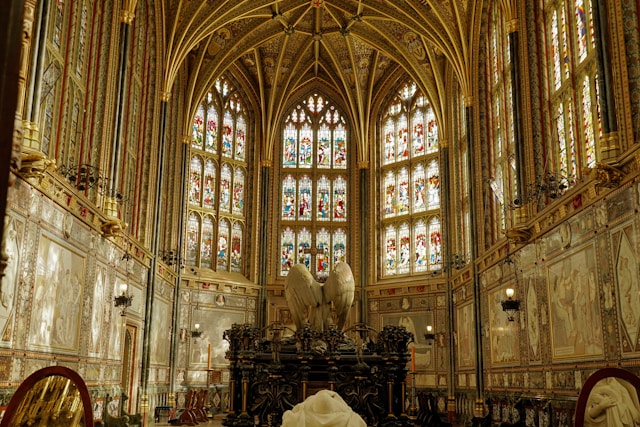
Discover Affordable Worship Spaces: Churches for Sale Under $50,000
Introduction
For congregations seeking an affordable and consecrated space for worship, churches for sale under $50,000 offer an exceptional opportunity. These properties provide a sanctuary for religious practice, community gatherings, and spiritual growth at an attainable cost.
Benefits of Purchasing a Church Under $50,000
Affordable Investment
Churches under $50,000 represent a significant savings compared to traditional church construction or renovation costs. This makes it possible for smaller congregations or ministries with limited budgets to acquire a dedicated space for their worship services.
Historic Significance
Many churches for sale under $50,000 have a rich history and architectural character. They may have been built in the 19th or early 20th century and feature unique design elements such as stained glass windows, vaulted ceilings, and intricate woodwork.
Community Appeal
Acquiring a church can foster a sense of community and connection within the neighborhood. It provides a central gathering place for religious services, social events, and outreach programs, contributing to the overall well-being of the local population.
Where to Find Churches for Sale Under $50,000
- Commercial real estate websites
- Real estate agencies specializing in religious properties
- Online marketplaces
- Organizations dedicated to connecting buyers and sellers of churches
Tips for Buying a Church Under $50,000
Conduct Thorough Inspections
Before purchasing any church, it is crucial to conduct a thorough inspection of the property. This includes assessing the structural integrity, electrical and plumbing systems, and any potential environmental hazards.
Determine Renovation Costs
While churches under $50,000 may be affordable upfront, it is essential to factor in the potential costs of renovations and upgrades to ensure the property meets your needs. This may include repairs to the roof, windows, or interior finishes.
Consider Utility and Maintenance Expenses
In addition to the purchase price and renovation costs, churches typically require ongoing utility and maintenance expenses. These should be carefully considered and budgeted for to ensure long-term financial sustainability.
Secure Financing
Financing a church purchase can be challenging, but there are options available. Explore options such as traditional bank loans, SBA loans, or specialized financing programs designed for religious organizations.
Additional Considerations
Zoning Restrictions
Ensure that the property is zoned appropriately for religious use. If necessary, consider applying for a variance or zoning change to allow for the establishment of a church.
Historical Preservation
Some churches may be designated as historic landmarks, which can impose certain restrictions on renovations or alterations. Be aware of these potential limitations before making a purchase.
Parking and Accessibility
Adequate parking and accessible entrances are essential for a functioning church. Assess the property’s parking situation and make any necessary accommodations.
Conclusion
Churches for sale under $50,000 provide an exceptional opportunity for congregations to acquire an affordable and meaningful space for worship and community engagement. By carefully considering the factors outlined in this blog post, you can make an informed decision and find a church that meets your current and future needs.